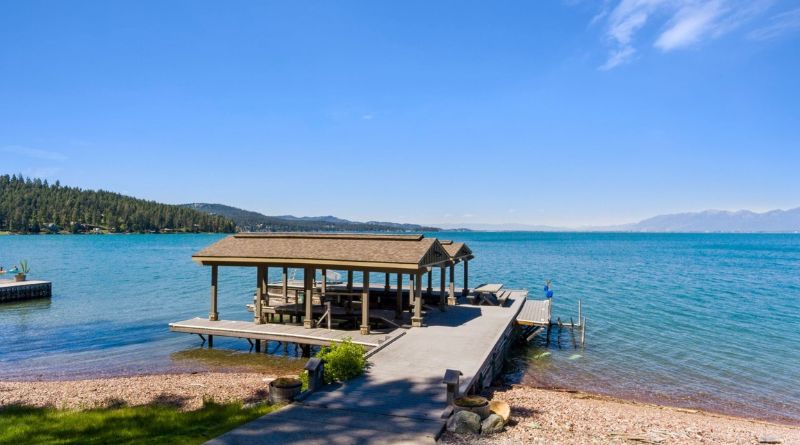Purchasing a waterfront property is a dream for many. The appeal of waking up to a serene view, having immediate access to outdoor activities like boating or swimming, and the soothing sound of water nearby is hard to resist. However, buying a home near the water has unique challenges and considerations. Whether you’re looking for a tranquil lakeside retreat or an oceanfront villa, there are numerous factors to evaluate before making this significant investment.
Location and Type of Water Body
The type of water body your property is adjacent to can significantly impact your lifestyle and overall value. For example, an oceanfront home offers stunning views and direct access to the sea. However, it may also incur higher maintenance costs due to saltwater corrosion and exposure to strong winds or storms. On the other hand, a lakefront property may provide a more peaceful environment and be less prone to severe weather. However, it still has challenges like fluctuating water levels or aquatic weeds.
Each water type offers different recreational opportunities. While living near the ocean means surfing, fishing, and swimming, riverfront homes may be ideal for kayaking or quiet picnics.
Remember to factor in climate and local weather patterns. Oceanfront properties in tropical areas may face hurricanes, while lakefront homes in colder regions can experience severe winter freezes. The proximity to the water can also pose risks, like flooding or erosion.
Enhancing your waterfront property’s landscape with native plants and erosion control measures can create a harmonious and sustainable environment. For a diverse selection of suitable flora and expert advice, consider visiting a reputable garden store in Portland.
Legal and Environmental Regulations
Owning a waterfront property comes with unique legal considerations, starting with zoning laws and building restrictions. Local governments often have strict regulations to protect the surrounding environment, preserve natural landscapes, and mitigate risks like flooding. You might find that you can’t build as close to the shoreline as you’d like or that particular renovations are heavily restricted. In some cases, you may need specific permits to construct docks and boathouses or modify your property in ways that could affect the natural flow of water.
Many waterfront properties are in flood-prone areas, which can impact your insurance costs and the types of buildings allowed. You’ll want to research whether the property is in a designated flood zone and, if so, what flood insurance is required. Flood insurance is typically more expensive for homes near water, so this should be a factor in your budget.
Environmental regulations also play a significant role. These rules protect local wildlife, aquatic life, and vegetation. Depending on the location, you may be limited in terms of landscaping, tree removal, or installing water access features. Some areas also have strict rules about septic systems and waste disposal to protect the quality of the nearby water body.
Property Condition and Maintenance
Waterfront homes typically face harsher conditions compared to properties located inland. The combination of humidity, moisture, and salt (in the case of oceanfront homes) can lead to the rapid deterioration of building materials. Saltwater can corrode metal and concrete over time, while constant humidity can encourage mold growth and wood rot. Give special attention to the materials used in construction, and consider that frequent maintenance will be likely.
Get a comprehensive property inspection before buying. You’ll want to check for signs of water damage, such as mould, mildew, or structural weakening. Erosion can also be a significant issue for properties near the water. Shoreline erosion can gradually eat away at the land, potentially threatening the home’s foundation. Retaining walls or other protective measures should be in place and well-maintained.
Maintenance costs can be high. Everything from decks to roofs may require extra care to withstand the moist conditions. Pest control can also become a problem with waterfront homes, as mosquitoes, insects, or even larger wildlife are more common in these environments.
Water Access and Usage
Some homes come with private docks or boathouses, while others might share access with neighbours or provide no direct access at all. If private water access is a priority for you, verify the property’s ownership rights and confirm that the legal documentation is clear. You may also need to check if additional permits are required to build or maintain a dock.
There are also rules around the activities permitted in and around the water. If you’re looking forward to boating, fishing, or other recreational uses, be aware that local regulations may limit these activities. Specific lakes or rivers may restrict the size or type of boats allowed.
In some regions, the government owns the water itself, while you may own only the land. If you plan to install structures like piers, jetties, or ramps, be aware that this can affect how you use the water.
- ed sheeran details the lovestruck jitters in sweet new single …
- pedrovazpaulo business consultant
- pedrovazpaulo business consulting
Community and Infrastructure
Some waterfront properties are located in remote or seasonal areas, which might limit access to amenities like healthcare, schools, grocery stores, or restaurants. You’ll need to assess whether you’re comfortable with a more isolated lifestyle or prefer a property close to urban conveniences.
The character of the local community can also impact your experience. In some areas, waterfront properties may attract a large influx of tourists during the summer, affecting privacy and tranquillity. Alternatively, the community could comprise mostly seasonal residents, meaning it could feel deserted during the off-season.
Check on the accessibility of utilities. Water, electricity, or waste management services may not be as reliable in some remote locations. Emergency services, such as fire or medical response, could also take longer to reach these areas, so understanding the infrastructure is crucial.
Long-term Investment Potential
Waterfront properties are often considered prime real estate, but their value can fluctuate due to several factors. Trends in the local market, climate change concerns, and potential changes in environmental regulations can all influence the future resale value of your property.
While waterfront homes typically appreciate well, market conditions may vary depending on the location. Areas with increasing risk of flooding or erosion may see a dip in property values. On the other hand, demand for homes near water remains high, making them generally a good investment.
Understanding the potential risks and rewards will help you make a long-term plan for your investment, whether you intend to use it as a permanent residence or a vacation home.
Purchasing a waterfront property can be an exciting venture. It offers the chance to live in a beautiful, serene location with direct access to nature. When you consider the unique aspects of waterfront living, you can make an informed decision that ensures your dream home stays a dream come true.
May Also Read: techytent





